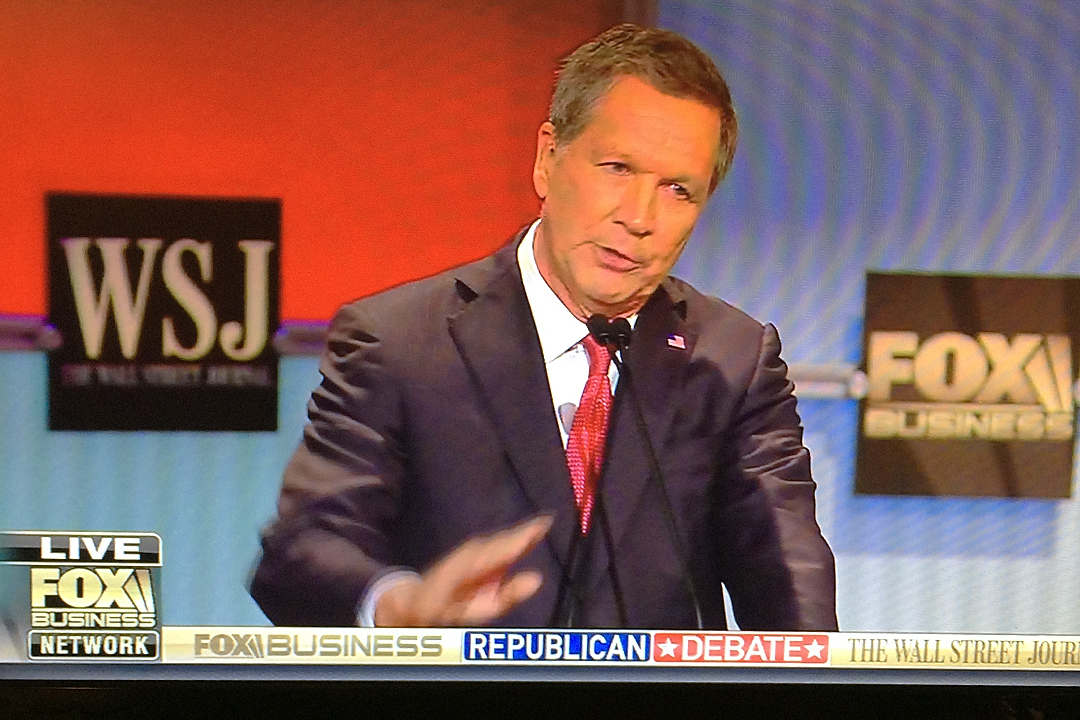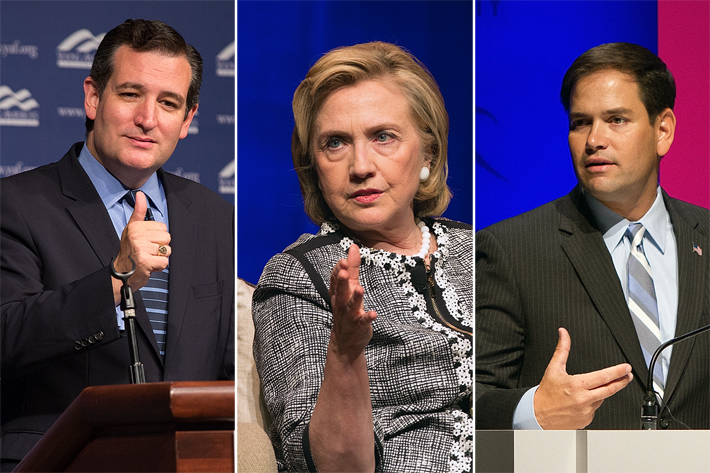The big three—Donald Trump, Hillary Clinton and Bernie Sanders—continue to dominate overall media traffic, but other presidential hopefuls are making the most of their mentions, according to the latest Public Echoes of Rhetoric in America (PEORIA) Project report, released Monday by the Graduate School of Political Management and Zignal Labs.
“Kasich Rising,” the title of the November report, alludes to one such candidate: Ohio Gov. John Kasich, who despite polling in the low single digits and garnering just 2.4 percent of the share of voice in the Republican field, has garnered the second highest “echo conversion score” among all candidates measured. That score divides website shares by the total number of social media mentions for the candidate.
Gov. Kasich’s Twitter strategy has focused on New Hampshire, with two of his top five hashtags—#FITN and #NHPolitics—centered on the first primary state.
“The social media content we have seen associated with the Kasich name is small but telling,” said Michael Cornfield, GSPM associate professor and Global Center for Political Engagement research director. “It shows how one does not have to be a celebrity like Trump, an ideological favorite like [Ted] Cruz and Sanders, or an organizational giant like Clinton to make strategic gains through hashtags and website shares.”
Despite his high scores in terms of total social media mentions, Mr. Trump comes in last in echo conversion rate, with only 4,517 website shares compared to 8.5 million social media mentions. He still manages to score high in terms of talk, receiving hundreds of thousands more mainstream media mentions and millions more social media mentions than his closest rival, Ben Carson.
On the Democratic side, Ms. Clinton continues to be the most talked about candidate in mainstream (45 percent) and social (46 percent) media. However, Sen. Sanders managed to narrow the gap in media mentions with Ms. Clinton after the October CNN debate.
“Presidential debates are social media events, and the Clinton campaign did a good job getting their message out during the CNN event,” GSPM Associate Professor and Political Management Program Director Lara Brown said. “The campaign garnered over 50,000 website shares, and those represent a chance for her campaign to identify potential supporters within the ‘political junkie’ demographic and identify messages that resonate with them.”
Other key findings from Dr. Brown and Dr. Cornfield in the November report:
- Conversations that have gotten the most traction during the debates have been antagonistic in composition. During the Democratic debate, Mr. Trump’s live-trolling of the proceedings garnered more retweets than any of the Democratic campaigns trying to get their message out. Mike Huckabee, a bottom-tier Republican candidate, also had a successful night poking fun at the answers from the other side. Democrats weren’t above mudslinging, with Hillary Clinton’s jab about the #GOPdebate getting more retweets than any of the Republicans that evening.
- Vice President Joe Biden’s announcement that he would not seek the presidency, coupled with Ms. Clinton’s testimony before the House of Representatives committee on Benghazi deprived Sen. Sanders of some media oxygen near the end of October. His mentions were down about 10 percent during that time.
- Ms. Clinton also got some social media support from an unlikely source during that time frame: pop singer Katy Perry. Two tweets from Ms. Perry (one about a contest to meet her at a Clinton rally in Iowa and one on the Benghazi hearing) garnered 2,600 more retweets than Ms. Clinton’s two most popular messages.




